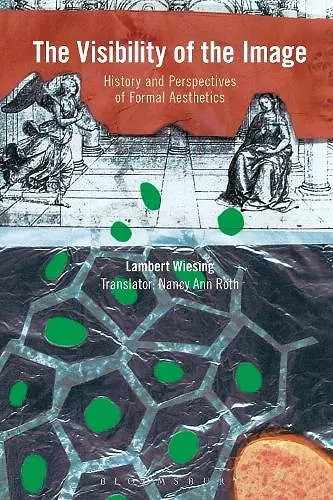The Visibility of the Image
History and Perspectives of Formal Aesthetics
Lambert Wiesing author Nancy Ann Roth translator
Format:Hardback
Publisher:Bloomsbury Publishing PLC
Published:22nd Sep '16
Currently unavailable, and unfortunately no date known when it will be back

An in-depth overview of the history of formal aesthetics using the work of six major and minor philosophers.
Now available in English for the first time, The Visibility of the Image explores the development of an influential aesthetic tradition through the work of six figures. Analysing their contribution to the progress of formal aesthetics, from its origins in Germany in the 1880s to semiotic interpretations in America a century later, the six chapters cover:
Robert Zimmermann (1824-1898), the first to separate aesthetics and metaphysics and approach aesthetics along the lines of formal logic, providing a purely syntactic way of using signs, regardless of objective content;
Alois Riegl (1858-1905), who went on to further develop aesthetics on the model of formal logic, creating a theory of style in response to Zimmermann’s call for an aesthetics oriented toward formal logic;
Heinrich Wölfflin (1864-1945), who represents a step toward an understanding of consciousness by using pictures as cognitive tools;
Konrad Fiedler (1841-1895), the Saxon philosopher who considered the possibility that some kinds of images are made and viewed not for what they show, but for their visibility’s sake alone;
Maurice Merleau-Ponty (1908-1961), responsible for taking up the connections between the problems of reducing the range of potential meanings and contexts of a given image down to just the picture surface;
Charles William Morris (1901-1979), who set out to establish whether a picture with no objective reference, such as an abstract painting, still counts as a sign, and if so, in what sense.
Bringing these thinkers together and interlinking their ideas, Lambert Wiesing presents an engaging history of formal aesthetics, while reconstructing the philosophical foundations for the appearance of new image forms in the 20th century, including the video-clip, abstract collage, digital simulation and virtual reality. Using this original approach, The Visibility of the Image introduces the rise of modern image theory and provides a valuable account of our engagement with pictures in the 21st century.
Lambert Wiesing’s The Visibility of the Image is the most important book on the history of art history I know. It gives six case studies of six art historians: Zimmermann, Riegl, Wölfflin, Fiedler, Merleau-Ponty and Morris, in search of the roots of a certain version of broadly formalist vision of art history and an account of our engagement with pictures. A must-read for anyone interested in any of these six authors but also for anyone interested in (vaguely formalist) art history and our engagement with pictures. * Bence Nanay, Professor of Philosophy and BOF Research Professor Centre for Philosophical Psychology, University of Antwerp (Belgium), and Senior Research Associate Peterhouse, University of Cambridge, UK *
Wiesing's landmark study reveals the deep historical roots of contemporary debates in image theory while at the same time opening up new philosophical resources. The reader is granted access to a distinctive tradition of enquiry that erroneously enriches our understanding of image perception. * Jason Gaiger, Associate Professor of Contemporary Art History and Theory, University of Oxford, UK *
A must read for anyone interested in the philosophical questions arising from pictorial representation. * Dominic Gregory, Senior Lecturer in Philosophy, University of Sheffield, UK *
In this fascinating work - part history of philosophically-minded aesthetics, part rumination on the nature of images, and part exploration of how the possibilities implicit in that nature have increasingly been exploited by new image-making technologies - Wiesing offers a deeply informed and theoretically searching exploration of one of the dominant phenomena of our age. * Robert Hopkins, Professor of Philosophy, New York University, USA *
ISBN: 9781474232647
Dimensions: 236mm x 160mm x 26mm
Weight: 600g
280 pages